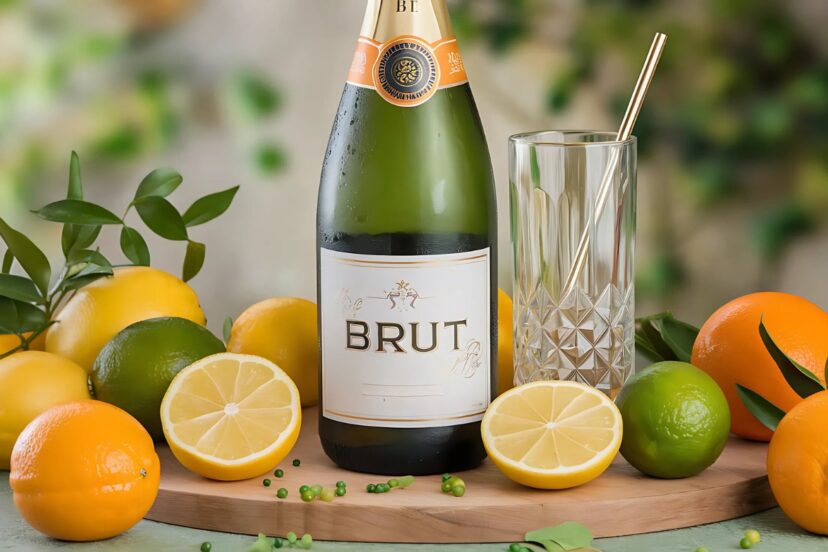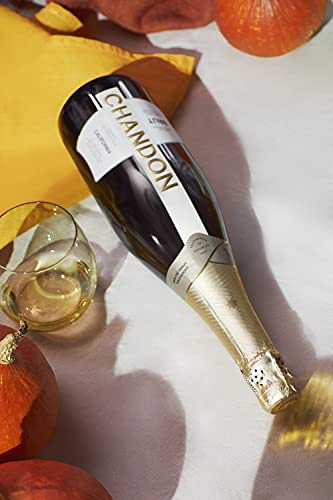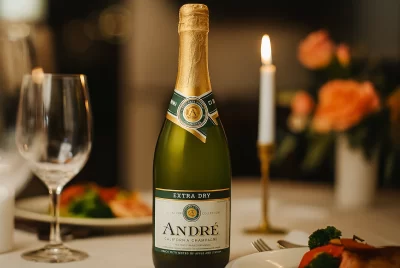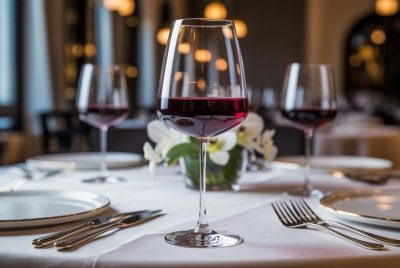Understanding Brut Wine: Your Guide to Sparkling Wine
Post Disclaimer
*We may earn a commission for purchases made using our links. Please see our disclosure to learn more.
As a wine enthusiast and certified sommelier, I’ve noticed a growing interest in brut wines among both newcomers and seasoned wine lovers. Having spent years exploring various sparkling wines, I can confidently say that brut wine offers a fascinating journey into the world of sophisticated bubbles. In this comprehensive guide, I’ll share everything you need to know about this crisp, elegant style of wine that’s become increasingly popular at dinner parties and special celebrations.
Key Takeaways
- Brut wine is a dry sparkling wine containing less than 12 grams of residual sugar per liter
- The term “brut” can apply to any sparkling wine, not just Champagne
- Brut wines are incredibly versatile for food pairing and suitable for various occasions
- The production method significantly influences the quality and taste of brut wines
- Proper serving temperature (45-50°F) is crucial for enjoying brut wine at its best
Top Recommended Brut Wines Available on Amazon
Veuve Clicquot Yellow Label Brut Champagne
Elevate any occasion with Veuve Clicquot Yellow Label Brut Champagne. This iconic champagne, crafted in the heart of Champagne, France, is dominated by Pinot Noir, offering a perfect balance of strength and finesse. The first sip delights with fruity notes, which then evolve into subtle hints of brioche and vanilla. Presented in a luxurious gift box, it's an exquisite choice for celebrations, special gifts, or personal enjoyment. With 92 points from James Suckling and other prestigious ratings, this champagne pairs beautifully with white fish, lobster, salmon, or fine cheeses.
- Exquisite balance of fruitiness and subtle brioche/vanilla notes.
- Highly rated with 92 points from James Suckling and Wine Spectator.
- Perfect gift with a stylish gift box, ideal for celebrations.
- Premium price may be a consideration for budget-conscious buyers.
- Not suitable for those who prefer sweeter wines.
- Requires careful handling to preserve its delicate flavors.
Veuve Clicquot Yellow Label Brut Champagne is the epitome of sophistication and timelessness. Known for its perfect balance of structure and finesse, this champagne blends the strength of Pinot Noir with delicate aromas of brioche and vanilla. Whether you’re pairing it with seafood, fine cheeses, or enjoying it on its own. This luxurious champagne creates an unforgettable experience. With a history of excellence and prestigious ratings, Veuve Clicquot Yellow Label is a must-try for anyone looking to indulge in the world of fine sparkling wines.
Freixenet Cordon Negro Brut Cava
Freixenet's Cordon Negro Brut is Spain’s signature sparkling wine, earning the nickname "Black Bottle Bubbly" for its sleek, elegant packaging. With fresh flavors of apple, ripe pear, and bright citrus, this cava is complemented by a subtle touch of ginger, creating a clean, crisp, and well-balanced wine. Perfect for a range of occasions, Freixenet Cordon Negro Brut pairs wonderfully with everything from Eggs Benedict to seafood dishes like lobster or bluefin tuna. This delightful cava is the ideal pre-dinner choice for oysters, caviar, or sushi appetizers. At an affordable price, it's a must-have for sparkling wine lovers.
- Crisp and clean with refreshing apple, pear, and citrus flavors.
- Versatile pairing options with dishes like seafood, sushi, and Eggs Benedict.
- Affordable price for a premium-quality cava.
- Flavors may be subtle for those who prefer a stronger, more complex taste.
- Alcohol content (11.5%) may be slightly higher for those looking for a lighter drink.
- Vintage variation might affect consistency in flavor.
Freixenet Cordon Negro Brut Cava stands out as one of Spain’s most popular sparkling wines, often recognized by its distinctive black bottle. Its vibrant flavors of apple, pear, and citrus are perfectly balanced with a hint of ginger. Offering a refreshing and clean palate. Ideal for pairing with a variety of dishes, including seafood and light appetizers, this cava brings an elegant touch to any occasion.
Whether you’re enjoying it during brunch, with sushi, or at a celebratory gathering, Freixenet Cordon Negro Brut promises a delicious and affordable sparkling wine experience.
Piper Sonoma Brut
Piper Sonoma Brut is a delightful sparkling wine that shines with its pale gold color and fine, petite bubbles. Crafted from the region's flavorful Chardonnay and Pinot Noir grapes, this brut offers a rich, creamy texture, making it an elegant choice for any occasion. The wine presents a crisp and fresh taste with vibrant citrus notes of green apple, mandarin orange, and a touch of brioche. Sonoma's climate, with its warm days and cool nights, helps produce grapes with excellent acidity, contributing to the wine's well-balanced flavor profile. Whether enjoyed on its own or as a base for mimosas and cocktails like the Sonoma 75, Piper Sonoma Brut is perfect for any celebration.
- Fresh and crisp flavor with citrus, green apple, and brioche notes.
- Well-balanced acidity thanks to Sonoma's unique climate.
- Versatile wine for both solo sipping and cocktail making.
- Dry finish may not appeal to those who prefer sweeter sparkling wines.
- Slightly higher alcohol content (13.9%) compared to some other sparkling wines.
- Limited information from user reviews, with only one available rating.
Piper Sonoma Brut is the perfect sparkling wine for those seeking a balance of elegance and refreshing citrus flavors. Its pale gold hue and delicate bubbles set the stage for an enjoyable drinking experience. While the Chardonnay and Pinot Noir blend brings crispness and a touch of richness to the palate.
With fresh acidity and hints of green apple, mandarin orange, and brioche, it’s a delightful choice for enjoying solo or in your favorite cocktail, like the classic Sonoma 75. Whether you’re hosting a celebration or simply enjoying a quiet evening, Piper Sonoma Brut offers a versatile, flavorful option for all occasions.
Chandon Brut Classic
Chandon Brut, a sparkling wine from Sonoma County, California, offers a lively and refreshing drinking experience with its signature combination of apple, pear, and citrus flavors, complemented by a subtle hint of spice. This Brut Classic reflects the winery's dedication to capturing the essence of California's vineyards, delivering a soft, dry finish that enhances its complexity. With a well-balanced alcohol content of 13%, Chandon Brut is perfect for a variety of occasions. Whether enjoyed on its own or in cocktails like a Fig and Fizzy or Ginger Mojito, this sparkling wine pairs wonderfully with salty, creamy, or nutty dishes, making it a versatile choice for any celebration.
- Signature flavor profile with apple, pear, citrus, and a touch of spice.
- Versatile for sipping or mixing into cocktails.
- Excellent food pairing options with creamy, salty, and nutty dishes.
- Dry finish may not be ideal for those who prefer sweeter sparkling wines.
- Slightly higher price compared to some other sparkling wines in the market.
- Vintage variations may affect consistency for some drinkers.
Chandon Brut is the ideal sparkling wine for those who enjoy vibrant fruit flavors with a dry, crisp finish. Hailing from Sonoma County, California, this Brut Classic blends apple, pear, and citrus flavors with a touch of spice, offering a refreshing and well-balanced taste. Whether you’re serving it solo or mixing it into a Fig and Fizzy or Ginger Mojito, this wine adapts beautifully to different occasions.
Chandon Brut pairs wonderfully with salty, creamy, and nutty foods. Making it the perfect choice for festive meals or special gatherings. With its signature flavor profile, this wine is sure to add a touch of California sunshine to any celebration.
Understanding Brut Wine
When I first delved into the world of wine, I was curious about the term “brut.” I had heard it used frequently, especially when it came to sparkling wines, but I never truly understood what it meant. To my surprise, “brut” isn’t just a fancy French word; it has a very specific meaning that refers to the sweetness, or more accurately, the lack of sweetness, in the wine.
Brut wines are known for their dryness, meaning they contain very little residual sugar. Typically, they range from 0 to 12 grams of sugar per liter, which gives them that clean, crisp, and refreshing taste that many wine lovers, myself included, find so enjoyable.
What Makes a Wine “Brut”?
The term “brut” refers to a style of sparkling wine that is very dry, often with no sweetness at all. The wine achieves this dryness because most of the sugar is fermented out during the winemaking process. Residual sugar can still remain, but the amount in brut wines is minimal. This dryness is what gives brut wines their signature crispness and clean finish. If you prefer wines that aren’t sweet, brut is a fantastic choice.
In addition to dryness, brut wines typically have higher acidity, which gives them a refreshing bite. The term itself is mostly used in the context of sparkling wines, though it can also apply to still wines in some regions. Brut wines have become beloved for their ability to pair with a wide variety of foods and to stand on their own as an elegant, celebratory drink.
Production Methods
The process of making brut wine is a fascinating and complex one, rooted in the traditional methods used in sparkling wine production. Brut wines are often made using the méthode champenoise or other similar techniques. Here’s how it works:
First, a base wine is made, usually from a blend of grape varieties. This wine is then subjected to a second fermentation, which is where the magic happens. The second fermentation occurs in the bottle, and it’s during this process that the bubbles form, creating the effervescence we love in sparkling wines.
After the second fermentation, the wine undergoes a process called “remuage,” or riddling, where the bottles are gradually tilted and rotated to move the sediment (which forms naturally during fermentation) toward the neck of the bottle. The sediment is then removed through a process called disgorging. For brut wines, very little sugar is added during the final step of fermentation, which results in the wine’s signature dryness. If there’s any sweetness added, it’s in the form of a small amount of “dosage,” a mix of wine and sugar, but the quantity is minimal in brut wines.
Regions and Varieties
While Champagne from the Champagne region of France is the most iconic and famous example of brut wine, there are many other regions around the world that produce stunning brut wines. The beauty of brut is that it’s made in different regions with varying climates and terroirs, which gives each wine a unique twist.
- France: The Champagne region in northern France is home to the world’s most famous brut wines. Champagne brut is known for its elegant balance of fruit and acidity. Additionally, regions like Crémant also produce great brut wines with a slightly different profile.
- Spain: In Spain, the most popular brut sparkling wine is Cava. Made primarily in the Penedés region, Cava brut is known for its crisp freshness and a slightly more rustic flavor compared to Champagne.
- Italy: Italy’s Franciacorta and Prosecco regions produce excellent brut wines, with Prosecco being especially popular for its bright, fruity flavors and clean finish.
- United States: California and Oregon are home to many high-quality brut wines. The cooler climates of regions like Sonoma and Napa Valley help create the acidity necessary for a balanced brut.
- England: Sparkling wines from England, particularly from regions like Sussex and Kent, have gained international acclaim in recent years. Brut wines from England often have a crisp, minerally quality thanks to the unique climate.
Each of these regions brings its own distinct flair to brut wines, from the fruit-forward style of California to the minerally crispness of English sparkling wines.
Tasting Notes and Characteristics
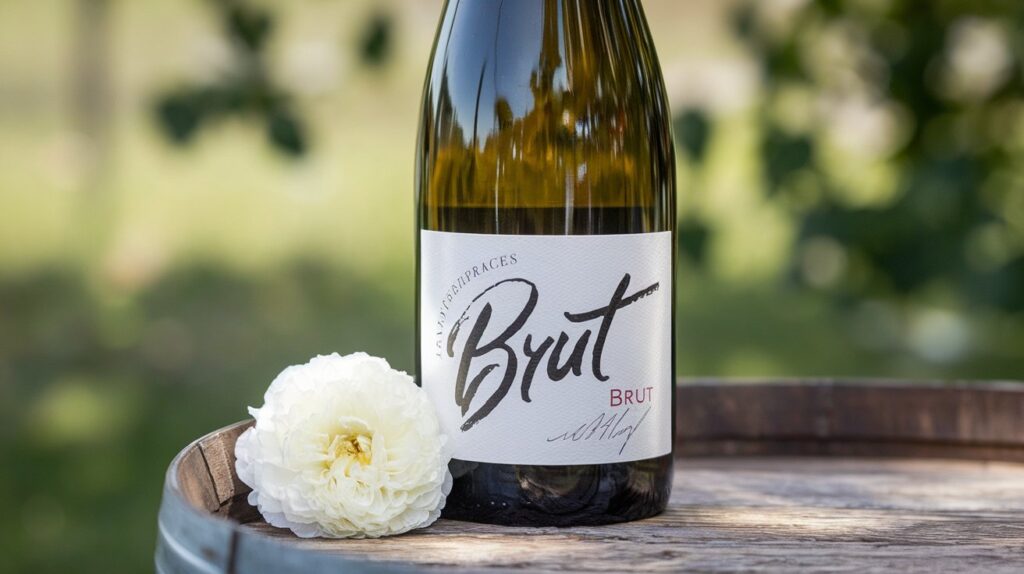
I’ve tasted many brut wines over the years, and although each bottle can be unique, there are some common characteristics I’ve come to expect. Here are some of the defining flavors and qualities of a great brut wine:
- Citrus and Green Apple Flavors: Brut wines often showcase vibrant, zesty citrus notes like lemon or lime, along with fresh green apple. These notes give the wine its lively, refreshing character.
- Toasted Bread or Brioche Aromas: A hallmark of brut wines, particularly those made using the traditional méthode champenoise, is the subtle aroma of toasted bread or brioche. These complex, yeasty scents come from the fermentation process and add depth to the wine.
- Mineral Undertones: Many brut wines, especially those from regions with rocky or chalky soils, have a mineral quality. This adds a refreshing, almost salty element to the wine’s taste.
- Crisp, Clean Finish: One of the things I love about brut wine is how refreshing it is. The finish is dry, clean, and crisp, leaving your palate ready for another sip.
- Fine, Persistent Bubbles: The bubbles in brut wines are typically delicate and long-lasting. This effervescence is part of what makes brut wines so enjoyable, as it lifts the wine and adds a light, festive feel.
Food Pairing
What I truly love about brut wines is their versatility with food. They’re incredibly food-friendly and can pair with everything from seafood to savory appetizers. Here are some of my favorite food pairings:
- Seafood and Shellfish: The crisp acidity of brut wines pairs beautifully with the delicate flavors of oysters, shrimp, lobster, and other shellfish.
- Light Appetizers: From fresh salads to charcuterie, brut wines are the perfect match for a wide range of appetizers. They work well with everything from light dips to cheese platters.
- Cheeses: Whether it’s creamy brie or sharp cheddar, brut wines elevate the flavors of both soft and hard cheeses. The dryness of the wine cuts through the richness of the cheese, creating a perfect balance.
- Poultry Dishes: Roasted chicken or turkey, especially with a savory sauce, pairs wonderfully with the crispness of brut wine.
- Asian Cuisine: Brut wines are also great with dishes like sushi, dim sum, or spicy stir-fries. The fresh acidity in brut wines complements the delicate yet bold flavors of many Asian dishes.
- Brunch Foods: There’s nothing better than sipping a glass of brut during brunch. Whether you’re enjoying eggs benedict, smoked salmon, or a light quiche, brut wines are a perfect match. They also shine in mimosas or classic cocktails like the French 75.
Serving and Storage
To get the most out of your brut wine, the right serving and storage methods are key. Here are a few tips I follow:
- Serving Temperature: For the best experience, brut wine should be served chilled. The ideal temperature is between 45 and 50°F (7 to 10°C). This helps preserve the bubbles and enhances the wine’s freshness.
- Glassware: Use a flute or tulip-shaped glass to allow the bubbles to rise and the aromas to concentrate. While white wine glasses can also work, flutes are the classic choice for sparkling wines.
- Storage: Store your bottles in a cool, dark place, away from sunlight and extreme temperatures. Brut wines are best consumed young, but some vintage brut wines can improve with age, so be sure to check the recommended drinking window.
- Drink Timing: Non-vintage brut wines should typically be consumed within 3-4 years of purchase. Vintage brut wines, however, can age beautifully for 5-10 years or more, developing more complex flavors as they mature.
Brut wines have a special place in the hearts of wine enthusiasts for their versatility, crispness, and ability to pair with a variety of foods. Whether you’re celebrating an occasion or simply relaxing at home, a glass of brut wine is always a refreshing and elegant choice.
Conclusion
After years of exploring sparkling wines, I can confidently say that brut wines offer a perfect mix of versatility, elegance, and value. Whether you’re new to wine or a seasoned enthusiast, brut wines are an excellent way to explore different regions and styles while enjoying that crisp, dry profile that makes them so appealing.
While Champagne is the most famous brut wine, there are many fantastic options from around the world, like Spain’s Cava or Italy’s Franciacorta. These wines come in a variety of styles and price points, so you don’t have to spend a lot to enjoy something high-quality. Many great brut wines are available for under $20, so there’s plenty of room to experiment without breaking the bank.
Brut wines are perfect for any occasion, whether you’re sipping on a special evening or pairing with food. They’re ideal for exploring different food pairings and finding what works best for your tastes.
Frequently Asked Questions
1. Is Brut wine always expensive?
No, not at all! While some Champagnes can be pricey, you can find excellent brut wines from regions like Spain (Cava) or Italy (Prosecco) at very reasonable prices, often under $20.
2. What’s the difference between Brut and Extra Brut?
Extra Brut contains even less residual sugar than Brut (under 6 grams per liter compared to Brut’s 12 grams). This results in an even drier taste profile.
3. How long can I store an unopened bottle of Brut wine?
Non-vintage brut wines are best consumed within 3-4 years of purchase. Vintage specimens, especially premium Champagnes, can age beautifully for 5-10 years or more when stored properly.
4. Should I always serve Brut wine in a champagne flute?
While champagne flutes are traditional, many wine experts (myself included) now prefer white wine glasses as they better showcase the wine’s aromas and flavors. Both options are perfectly acceptable.
5. Can I use Brut wine in cocktails?
Absolutely! Brut wine makes an excellent base for cocktails like Mimosas, Kir Royales, and French 75s. Just remember that premium Champagnes might be best appreciated on their own – save the cocktail mixing for more affordable options.

